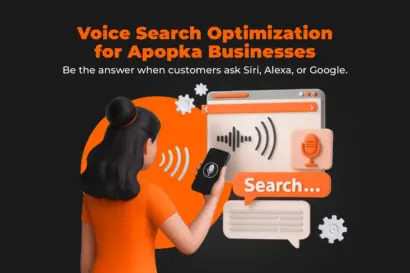Key Questions This Blog Will Answer
- What is the current average cart abandonment rate in 2025?
- Why are mobile users abandoning ecommerce checkouts at a higher rate?
- How can Central Florida ecommerce brands reduce abandonment rates?
- Which payment methods are essential to offer in 2025?
- What CRO tactics are most effective for recovering abandoned carts?
- How do tools like GA4, Hotjar, and Looker Studio help?
- What are the top KPIs for ecommerce CRO?
- How can personalized UX and remarketing improve checkout completion?
- What’s a good recovery rate for abandoned cart emails?
- What real-life results have Central Florida businesses seen with CRO?
What Is Cart Abandonment in Ecommerce?
Cart abandonment occurs when a user adds products to their online shopping cart but leaves without completing the purchase. In 2025, the issue goes beyond price—it’s often about user experience, payment options, and checkout speed.
According to Baymard’s 2025 UX Survey, 48% of U.S. shoppers cited extra costs (shipping, tax, fees) as the top reason for abandonment.
Source:
Baymard Institute – Cart Abandonment Rate Statistics
Learn More:
What Is a Shopping Cart Abandonment?
The $18 Billion Checkout Problem
In 2025, the average cart abandonment rate remains stubbornly high — 69.57%, according to the Baymard Institute. For ecommerce brands in Central Florida, this means tens of thousands in lost revenue each year. Despite AI tools and advanced funnels, shoppers are still ghosting at checkout. But why?
This article breaks down the core causes of abandonment in 2025 and how smart brands are reclaiming lost revenue with CRO (conversion rate optimization), UX design, and ecommerce automation.
What Is Conversion Rate Optimization (CRO)?
Why It’s Still a Big Problem in 2025
Even with personalization tools and one-click checkouts, abandonment is rising in some industries. Here’s why:
- Mobile Users: 72% of ecommerce traffic comes from mobile, yet mobile cart completion lags desktop by 24%.
- Payment Friction: Shoppers expect Apple Pay, Google Wallet, BNPL, and PayPal.
- Lack of Trust: Missing badges, unclear return policies, and slow-loading pages kill conversions.
Pro Tip: Use trust signals like “McAfee Secure,” SSL, and social proof to boost conversion confidence.
Learn More:
What Is Web Accessibility (ADA Compliance)?
Top 5 Cart Abandonment Causes (2025 Edition)
1. Unexpected Costs at Checkout
Buyers bounce when final totals differ dramatically from what’s expected. This includes surprise fees for shipping, taxes, or handling that weren’t displayed earlier in the buying process. For Florida shoppers, transparency is key—clearly displaying all costs early in the funnel can significantly reduce drop-offs.
2. Forced Account Creation
Shoppers in a hurry often abandon carts when required to create an account before checking out. Central Florida consumers, especially mobile users, expect guest checkout options and simple login alternatives like social sign-in or one-time codes to complete their purchases quickly.
3. Limited Payment Methods
In 2025, mobile wallets and buy-now-pay-later (BNPL) options are not perks—they’re expectations. When ecommerce sites fail to offer Apple Pay, Google Pay, Klarna, or Afterpay, they alienate a large segment of tech-savvy Florida shoppers and increase abandonment risk.
4. Complex Checkout Forms
Over 50% of abandoned carts stem from forms that feel overwhelming, repetitive, or confusing. Central Florida brands can streamline this by minimizing required fields, enabling autofill, and removing unnecessary steps. User-friendly forms improve trust and speed.
5. Slow Site or Load Errors
Speed is critical in 2025. Studies show that 1 in 4 shoppers will leave a site that takes longer than 3 seconds to load. In Florida, where mobile connections can vary by region, optimizing for performance and uptime can drastically reduce abandonment and bounce rates.
What Is Page Speed Optimization?
How Central Florida Brands Are Fighting Back
Retailers from Winter Garden to Daytona Beach are deploying smarter CRO strategies:
- Heatmaps & Funnel Analytics: Tools like Hotjar and Google Analytics 4 show where drop-offs occur.
- Exit Intent Popups: Offer discounts or reminders when a user shows signs of leaving.
- Abandoned Cart Emails: Recover up to 30% of lost carts with optimized sequences.
- Live Chat Assistance: Address objections before they become exits.
What Is Conversion Rate Optimization (CRO)?
CRO Strategies That Work in 2025
Mobile-First Design
Prioritize UX for smartphones, as mobile continues to dominate online shopping in Florida. In 2025, over 70% of ecommerce traffic in Central Florida originates from mobile devices, yet conversion rates often lag behind desktop. To close this gap, successful brands implement features like autofill for forms, large tap-friendly CTA buttons, and sticky checkout banners that remain visible as users scroll. A mobile-first approach ensures that shoppers enjoy a smooth, frustration-free experience—especially important for users browsing on the go in metro areas
Progress Indicators
Show steps in the checkout process to reduce anxiety and encourage follow-through. In 2025, users expect transparency during online purchases. When shoppers can clearly see how many steps are left—such as billing, shipping, and confirmation—they’re more likely to complete the transaction. For Central Florida ecommerce stores, especially those with longer checkout flows or multiple upsell options, visual progress bars improve user confidence and decrease drop-off rates. According to Baymard’s latest UX study, sites with visible progress indicators see up to 12% higher checkout completion rates.
Scarcity & Urgency Tactics
Countdown timers, low-stock alerts, and “Only 1 left in stock” messages are classic CRO tactics that continue to drive performance in 2025. These elements tap into psychological triggers—like FOMO (fear of missing out)—and encourage quicker decision-making. For Central Florida ecommerce retailers, especially those in competitive verticals like fashion, home decor, or seasonal products, urgency tactics can increase conversions by up to 14%, according to Shopify’s latest UX research. When implemented tastefully, these tactics help reduce hesitation and guide users toward checkout completion.
Smart Retargeting
Use dynamic product remarketing on platforms like Facebook, Instagram, and the Google Display Network to re-engage shoppers who left without purchasing. These ads automatically display the exact products a user viewed, often paired with incentives like limited-time discounts or free shipping. Central Florida ecommerce brands using retargeting campaigns have seen click-through rates up to 400% higher than standard display ads. By keeping your products top-of-mind, dynamic retargeting shortens the purchase cycle and recovers lost sales more efficiently.
Learn More:
What Is Dynamic Product Remarketing?
Metrics That Matter in Ecommerce CRO
Tracking and responding to the right KPIs is key:
- Cart Abandonment Rate
- Checkout Completion Rate
- Average Order Value (AOV)
- Conversion Rate by Device
- Email Recovery Rate
According to Klaviyo, abandoned cart flows in 2025 average a 15.2% recovery rate.
Learn More:
Case Study: Florida Furniture Retailer Reclaims $48K in Lost Sales
Client: HomeStyle Living (Florida-based)
Challenge: High mobile cart abandonment (76%)
Solution:
- Switched to a one-page mobile checkout
- Added Apple Pay + BNPL options
- Used A/B testing on cart layout
- Implemented 3-step abandoned cart email sequence
Results:
- Recovery rate jumped to 24%
- $48,000 in recovered sales over 3 months
- Bounce rate dropped 31%
Conclusion: Smart Brands Fix the Leaks
In 2025, ecommerce success in Central Florida isn’t just about traffic — it’s about what happens after the click. With smarter CRO strategies, personalized user journeys, and better analytics, brands are finally turning abandonment into opportunity.
Takeaway: You don’t need to double your traffic — just convert the traffic you’re already paying for.
Ready to reduce cart abandonment and increase revenue?
Book a CRO Audit for Your Ecommerce Store →
Explore Related Services
- Local SEO Optimization Florida
- Web Development Florida
- Shopify Website Development Florida
- Logo and Branding Florida
- Social Media Advertising Florida
- AdManager Facebook Florida
- Search Engine Positioning SEO Florida
Frequently Asked Questions
1. What is a good cart abandonment rate for ecommerce in Florida in 2025?
A good cart abandonment rate for ecommerce stores in Florida in 2025 is anything under 60%. While the national average hovers around 69.57%, top-performing Central Florida brands—especially those investing in CRO and mobile UX—are pushing their rates below 50%. Businesses that consistently audit their checkout experience and adapt to changing user expectations are seeing the highest performance.
2. Why do Florida shoppers abandon carts even when discounts are offered?
Even with appealing discounts, many Florida shoppers abandon carts due to poor checkout experiences, unexpected fees, limited payment options, or distrust in the process. In Central Florida, where mobile usage is high, a slow-loading checkout page or forced account creation can drive users away before completing their purchases. Effective CRO strategies help address these friction points beyond just price incentives.
3. How can abandoned cart emails improve ROI for Florida-based ecommerce brands?
Abandoned cart emails are critical for Florida ecommerce retailers aiming to recover lost revenue. With an average recovery rate of 15–30%, well-timed and personalized email sequences can significantly lift ROI. Local brands that include urgency-driven messaging, product images, testimonials, and mobile-optimized CTAs see better engagement, especially when combined with localized offers or incentives.
4. What payment options should Florida ecommerce sites support in 2025?
In 2025, Florida shoppers expect multiple frictionless payment options. These include Apple Pay, Google Pay, PayPal, Klarna, Afterpay, and traditional credit/debit cards. Central Florida retailers that offer these alternatives cater to both younger mobile-first buyers and more traditional online shoppers, thereby reducing checkout abandonment and expanding their potential customer base.
5. How does mobile UX affect ecommerce conversions in Central Florida?
Mobile UX is a major factor influencing conversions across Central Florida. With over 72% of ecommerce traffic originating from mobile devices, a poorly optimized checkout process can lead to immediate exits. Brands that employ responsive design, fast load speeds, simplified forms, and click-to-call functionality are experiencing improved cart completion rates and reduced bounce rates.
6. What is an effective cart recovery sequence for Florida ecommerce businesses?
An abandoned cart recovery sequence for Florida ecommerce brands should include a series of 2–4 emails or SMS messages sent within 24–72 hours. These should highlight the abandoned item, include trust signals, offer assistance, and provide urgency through limited-time offers. Including localized content or delivery timelines for Central Florida can increase relevance and conversion likelihood.
7. How often should ecommerce stores in Florida perform CRO audits?
Florida-based ecommerce stores should conduct CRO audits at least quarterly, or after any significant website updates. These audits help identify and resolve issues such as form abandonment, slow pages, or confusing navigation. Tools like Google Analytics 4, Hotjar, and Looker Studio enable Florida marketers to analyze behavior patterns and A/B test new checkout optimizations.
8. Can personalization help reduce cart abandonment for Florida shoppers?
Absolutely. Personalized ecommerce experiences help Florida shoppers feel understood and increase purchase intent. Features like geo-targeted shipping options, personalized product recommendations, and dynamic content based on browsing behavior can significantly reduce abandonment. Central Florida retailers that embrace personalization typically see higher engagement and conversion rates.
9. How does high cart abandonment affect Florida ecommerce revenue?
With cart abandonment rates approaching 70%, Florida ecommerce brands could be losing tens of thousands of dollars monthly. Every cart that isn’t recovered represents marketing spend without ROI. Implementing CRO and recovery strategies ensures that brands recapture otherwise lost revenue without increasing ad spend.
10. What’s the best first step for Florida brands looking to fix cart abandonment?
The first step for Florida ecommerce brands is to perform a full checkout experience audit. This includes simplifying the checkout process, adding mobile payment options, improving page load speed, and launching an abandoned cart recovery sequence. These foundational actions often result in immediate improvements in conversion rate and customer satisfaction.
Learn More:




